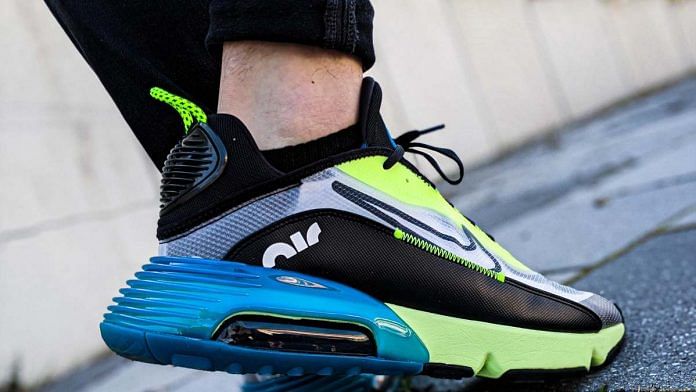If you have a body, you are an athlete – according to the sports brand Nike, that is.
It’s an inclusive outlook from a brand that is closely associated with elite athletes at the very peak of their physical prowess. And with the unveiling of the latest iteration of a shoe designed to be accessible to all, the company appears to be taking its mission statement seriously.
The FlyEase is a shoe without laces. A shoe you quite literally step into and out of without the need to use your hands. That’s particularly welcome news to the millions of people for whom the tying of shoelaces is an intractable problem. For people living with a range of conditions, from autism to dyspraxia, cerebral palsy to hemiplegia and many more, tying shoelaces can often mean getting help from someone.
Spurred into action
It was that which led US teenager Matthew Walzer to contact Nike directly in 2012. Walzer has cerebral palsy, with limited mobility in one of his hands, and while the condition hasn’t held him back, it does mean that shoelaces are a problem.
“My dream is to go to the college of my choice without having to worry about someone coming to tie my shoes every day,” Walzer wrote in his letter to Nike. “I’ve worn Nike basketball shoes all my life. I can only wear this type of shoe, because I need ankle support to walk. At 16 years old, I am able to completely dress myself, but my parents still have to tie my shoes. As a teenager who is striving to become totally self-sufficient, I find this extremely frustrating and, at times, embarrassing.”
The letter spurred a team of designers into action and led to the creation of a shoe with a hinged sole that allows for ease of ingress and egress, with a high-tension band helping retain the shoe’s structural integrity.
Addressing inequalities in fashion
As many as one billion people worldwide experience some form of disability, according to the World Bank. That equates to 15% of the world’s population, with the incidence of disability being higher for developing countries. Many people living with disability are blocked from participating fully in social and economic opportunities. That can be due to a range of factors, including a lack of support services and assistive devices – including clothing and footwear.
Nike isn’t alone among big-name fashion brands in trying to make clothing more accessible to all. As far back as the 1970s, Levi Strauss & Co, a name synonymous with denim, introduced a pair of jeans that were designed with inclusivity in mind. Designer Helen Cookman used stretch denim and full-length zips built into the side seams of the jeans.
They could be unzipped from the top or the bottom and had easy-to-reach pockets.
Tommy Hilfiger has created a range of inclusive clothing under the Tommy Adaptive brand, while organizations like the Open Style Lab are working to get more mainstream interest in accessible fashion.
“Our mission is for all people to have access to style, regardless of cognitive and physical ability,” the Open Style Lab website says. Part of its work includes bringing designers, engineers and occupational therapists together to work on projects and concepts that develop clothing and wearables that meet the needs of people with disabilities.
The topic of making accessibility a mainstream concern was also addressed during the World Economic Forum’s Davos Agenda Week. As part of a session called Delivering Social Justice in the New Economy, panellists discussed how the pandemic has widened inequalities, particularly among members of disadvantaged groups and minorities.
Sean Fleming is Senior Writer, Formative Content.
This article was originally published in the World Economic Forum.
Also read: Self-love & storytelling — How India saw a podcast boom in the pandemic year 2020



